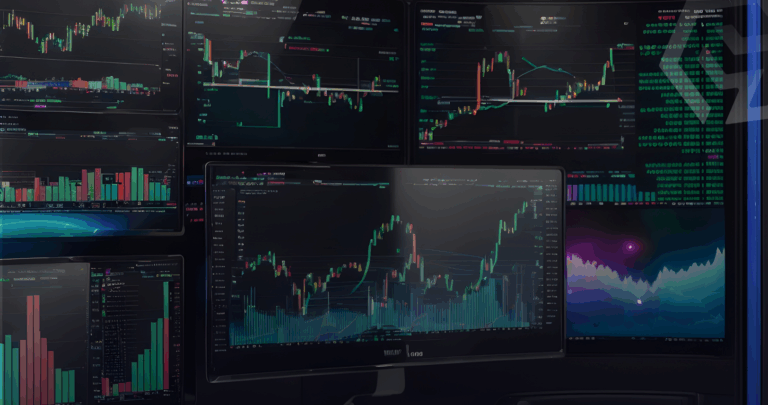European stocks, including the Stoxx 600, faced significant challenges this past week as political tensions and mixed earnings from EU companies weighed on investor sentiment. The pan-European Stoxx 600 dropped 0.6%, with technology stocks leading the decline due to uncertainty surrounding Federal Reserve leadership.
Market volatility has returned as investors reassess risk across Europe and look again towards the US equities market.
Trump-Powell tensions shake up markets
Recent political uncertainty in the US has sent shockwaves through at least the EU market when the White House official suggested President Trump is considering firing Federal Reserve Chair Jerome Powell. One official who was quoted told CNBC that Trump has consulted with lawmakers about the potential of firing the Fed Chair.
Initially based solely on unnamed sources, the story took a significant turn when Trump later clarified his official position during a White House press event. Although the eventual outcome saw Trump backing down, the back-and-forth sparked immediate market volatility as investors grappled with the potential implications of changes to Federal Reserve leadership.
What’s more, the uncertainty around existing monetary policy has added another layer of complexity for investors. With shocking political developments that can impact currency markets and bond yields, their valuations can fluctuate heavily across both the US and European markets.
Stoxx 600 faces pressure
The European benchmark index reversed gains incurred last week, closing 0.6% lower than anticipated. This highlights simply how fragile the nature of the market sentiment is – with tech stocks bearing the brunt of the selling pressure. With concerns about AI investments scaling across the headlines, stocks plummeted by 2.2%.
Reports that SoftBank and OpenAI’s ambitious $500 billion AI project faced implementation difficulties and scaled-down near-term plans sent ripples through the tech sector. This news particularly impacted semiconductor stocks in the EU markets.
The insurance sector provided a bright spot, climbing 0.5% as investors sought defensive positioning amid the broader market uncertainty. This sector rotation suggests investors are becoming more cautious about growth-oriented investments while seeking stability in traditional value sectors.
European earnings not matching expectations
Corporate earnings in the European markets have delivered mixed results, putting investors who previously sought refuge in the EU market under pressure.
What’s more, investors aren’t seeing any improvements since they banked on using EU stocks to diversify and prevent losses, as companies like the French automaker Renault saw shares plummet 18%, stressing operational challenges faced by the automotive sector. And that could be an indirect effect of the tariff plans imposed by the Trump administration.
These earnings disappointments contrast sharply with more positive results emerging from U.S. companies, where approximately 85% of reporting S&P 500 companies have beaten analyst expectations.
The divergence in results between U.S. and European corporate performance is making the landscape more uncertain. As we later highlighted, investors seeking refuge in the EU markets have seen their bets fail to materialize, with companies showing lower profits than expected.
S&P 500 reaches new highs
While European markets struggled, the S&P 500 continued its remarkable run, posting its 11th record close in 2023. The index ticked up 0.06% to end at 4,309.62, demonstrating the resilience of US companies despite global uncertainties.
Around 90 S&P 500 companies have reported results, with nearly 85% beating analyst expectations. Investors are closely monitoring company commentary on tariffs, demand trends, and AI-related spending as key indicators for future market direction.
The upcoming earnings reports from Alphabet and Tesla are highly anticipated, as these “Magnificent Seven” companies could drive earnings growth this season. Their results may indicate if the current market rally can continue.
Market volatility still there
Despite recent gains, underlying market volatility remains a concern for investors. As the VIX index has shown to be below 17.00, this suggests some market corrections could be ahead following new all-time highs from the S&P 500.
Even with US markets pushing to new highs, volatility and uncertainty are still part of what worries investors. The threat of 30% blanket tariffs on EU imports continues to weigh on investor sentiment, though many believe such extreme measures are unlikely to materialize. However, this doesn’t convey confidence for investors regardless of where they are looking to allocate their capital.
As markets become unpredictable, it’s becoming increasingly important to diversify investments that can weather both regional and sector-specific volatility. While European stocks face challenges despite optimistic outlooks in the past month, experienced investors understand that market dislocations often create attractive opportunities. Do you want to diversify your investments without having to worry about market volatility and geopolitical uncertainty? Explore Yieldfund investment plans and see how you can earn up to 60% annual returns through our diversified crypto investment strategies.


